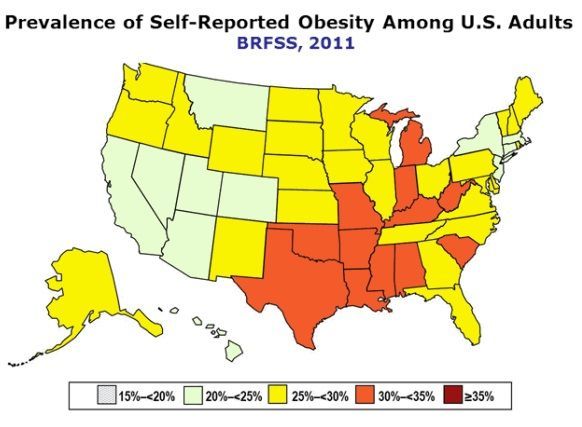Article
Obesity Prevalence Remains Too High
Author(s):
All states had a prevalence of obesity over 20%, and 12 states broke 30%.
Women with college degrees are less likely to be obese than less educated women; however, there’s no correlation between education and obesity for men, according to the Centers for Disease Control (CDC)
The most recent data from the CDC shows that 35.7% of U.S. adults and 17% of children and adolescents were obese in 2009-2010. The prevalence of obesity varied across states and regions, but still remained high in 2011. The south had the highest prevalence (29.5%), followed by the Midwest (29%), the Northeast (25.3%) and the West (24.3%.

Colorado had the lowest prevalence of obesity with 20.7% while Mississippi reported the highest prevalence with 34.9%.Since the CDC began collecting data in Colorado in 1990, the state has always had one of, if not the, lowest rates of obesity.
Because the CDC changed the methodology for estimating obesity prevalence, the numbers from 2011 forward cannot be compared to estimates from previous years. This latest data will be a new baseline for subsequent years. However, all data previous to this year’s can still be compared.
Two of the changes for the new methodology included incorporating cell-phone only households and a new weighting process.
While women with a higher education are less likely to be obese than less educated women, the same is true for higher income women vs. low income women. However, the same is not true for men. While obesity prevalence is generally similar at all income levels among men, there is a tendency for obesity prevalence to be slightly higher at higher income levels.
Most obese Americans are not low income, though. About 40% have incomes at or above 350% of the poverty level, 39% have incomes between 130% and 350% of the poverty level and only 20% below 130% of the poverty level.
Read more:
First New Weight-Loss Drug Approved in 13 Years
AMA Supports Soda Tax to Fight Obesity




